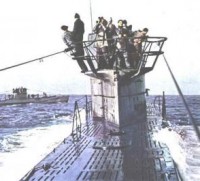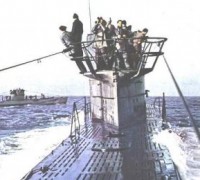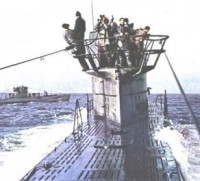U BOATS SUNK IN SOUTH ATLANTIC - U 128 / U 1062
13)U-177
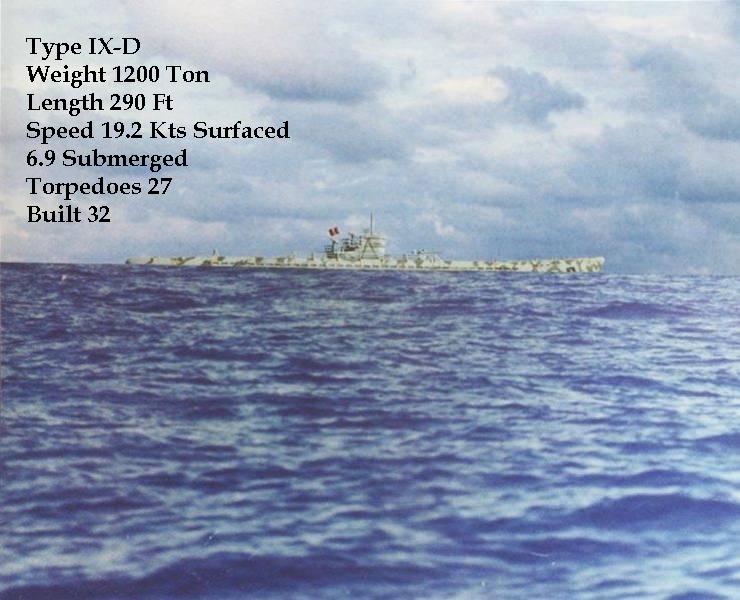
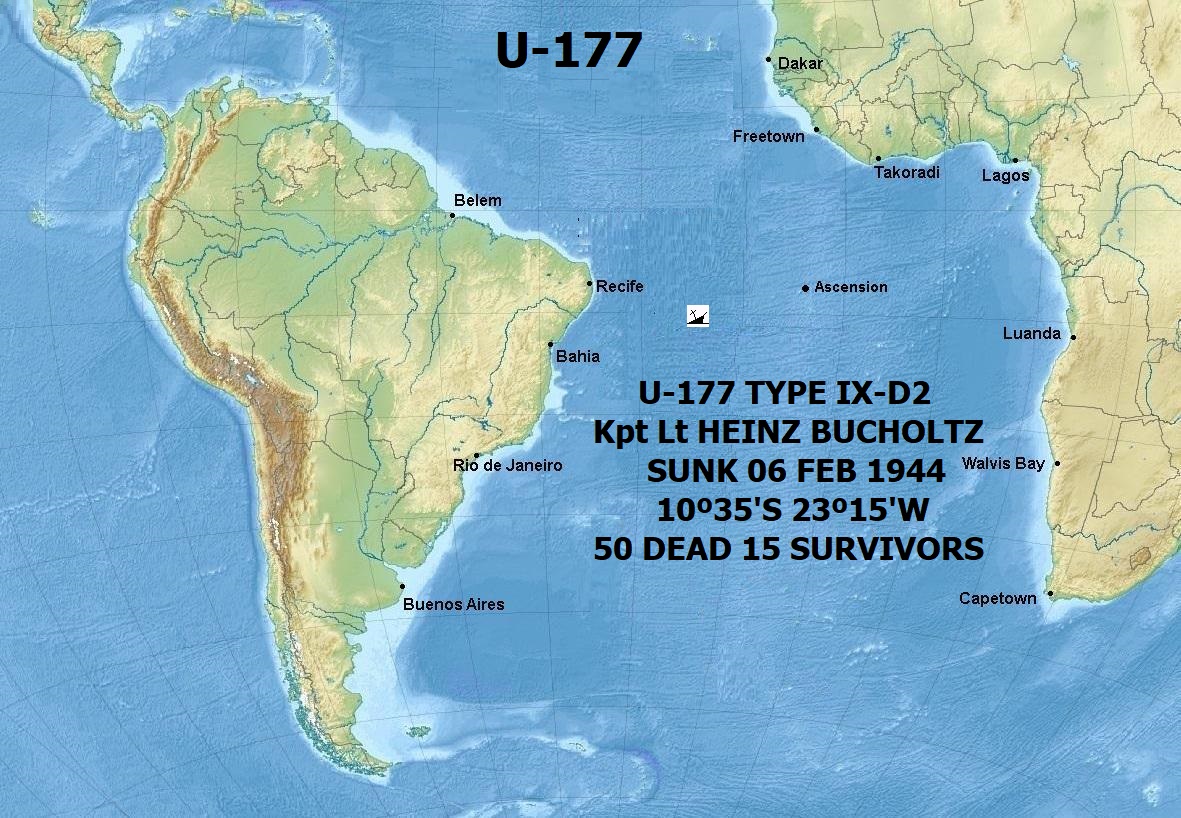
Ordered - 28 May 1940
Laid down - 25 Nov 1940 AG Weser, Bremen (werk 1017)
Launched - 1 Oct 1941
Commissioned - 14 Mar 1942 - Kptlt. Wilhelm Schulze
Commanders - 14 Mar 1942 - 23 Mar 1943 Kptlt. Wilhelm Schulze
24 Mar 1942 - 26 Oct 1943 KrvKpt. Robert Gysae (Knights Cross)
17 Oct 1943 - 6 Feb 1944 - KrvKpt. Heinz Buchholz
Career
3 patrols 14 Mar 1942 - 30 Sep 1942 4. Flottille (training)
24 Mar 1942 -16 Oct 1943 KrvKpt. Robert Gysae (Knights Cross)
17 Oct 1943 - 6 Feb 1944 KrvKpt. Heinz Buchholz
Career
3 patrols 14 Mar 1942 - 30 Sep 1942 4. Flottille (training)
1 Oct 1942 - 30 Nov 1943 10. Flottille (active service)
1 Dec 1942 - 6 Feb 1944 12. Flottille (active service)
Successes - 14 ships sunk, total tonnage 87,388 GRT
1 ship damaged, total tonnage 2,588 GRT
Fate: Sunk 6 Feb 1944 in the South Atlantic west of Ascension
Island, in position 10.35S, 23.15W, by depth charges from a
US Liberator aircraft (VB-107/B-3). 50 dead and 15 survivors.
By www.uboat.net
THE SINKING OF U-177
ACTION REPORT
A PB4Y-1 on anti-submarine sweep from
At three quarters of a mile and
Machine gun flashes were observed coming from a position near the Conning Tower, no men were observed on deck, and the U-boat gave no indication of attempting to crash-dive. The plane regained altitude to
.jpg)
This photograph, taken from the relief aircraft (107-B-10) one hour after the sinking, shows an oil slick approximately 1-1/2 miles acrossBy Cap. Jerry Mason USN Ret. www.uboatarchive.net
Took off from Ascension Island 0700 February 6, 1944, mission A/S sweep to include Commander Fourth Fleet estimate of enemy submarine plotted in General area of 10-00 S., 24-00 W. Clouds generally were cumulus with bases at 2000'. It had been agreed before take-off that if visibility was good, radar would not be used. The visibility was good and the radar was not used throughout the flight.
At 1025 GMT plane was on a course of 270° T at 2500' making a speed of 145 knots when bow lookout sights object at
The bridge watch lookout at the time was disposed as follows: Obersteuermann (Fabig) 000º - 090º III. W. O. (Schmidt) 090º -180º Seaman Bohr 180º - 270º Seaman Roch 270º- 360º Roch sighted the plane belatedly at an estimated distance of
In this connection it was stated that daily emergency gun drills had dulled the awareness of the gun crews, who "resented" the frequent interruptions of their rest. Their lethargic reaction to the genuine alarm, when it came, further sealed the fate of the U-boat.The Diesels were ordered to flank speed, and the U-boat turned to starboard. The first bomb was believed by survivors to have fallen directly onto the deck, well forward, the second next to the galley and the third just forward of the Control Room.
The object was recognized as a submarine creating a heavy wake in a moderate sea. When plane was approximately two miles from sub a moderate amount of heavy anti-aircraft fire was noticed approximately
At
All 3 detonations shook the boat so drastically that a number of men were wounded by objects torn loose from their mountings and by flying glass. The lights did not go out. Buchholz was preparing to ascend to the bridge when the detonations occurred, and climbed out of the Conning Tower a moment later. Almost immediately, the U-boat settled and water started to pour into the Control Room through the Conning Tower hatch. The engineer officer, making no effort to regulate the boat's trim, shouted "Boot taucht allein, alles raus" ("she's going down, everybody out").
As one survivor clambered out, the Conning Tower was already under water, and the flow of water into the U-boat was so strong that he could hardly reach the bridge. It was believed that several large water entries forward of the Control Room had made the boat settle. About 20 officers and men, including Buchholz, jumped into the water, all others being trapped in the flooded, sinking boat. As they swam about, the bomber came over again and released 3 more depth charges on the swirl of the sinking U-boat.
The detonation of these charges killed about 6 of the swimmers, including Buchholz and was felt by all of the survivors, several of whom were wounded by splinters while in the water. A moment later, there was a strong detonation from the area of the U-boat, which survivors believed to be the explosion of the batteries. The bombers now circled and flew low over the survivors, who expected to be machine-gunned, as the plane had strafed the U-boat while dropping the first series of depth charges; instead, they were merely photographed. Shortly thereafter, a second plane arrived as relief for the attacking bomber and dropped an inflatable rubber boat among the survivors. Fourteen officers and men reached the rubber boat. The bomber also dropped a life jacket to which provisions were attached.
Upon turning noted that sub had completely disappeared from surface but noted large disturbance and conning tower a few feet under water. Submarine at this point appeared to be turning to starboard. Pressed home second attack by dropping the remaining three depth bombs at what was estimated to be well ahead of conning tower. These last three bombs were released at
Leveled plane off and then regained altitude. Made slow turn to left and came back low over scene of attack noting many survivors in water. Notified plane captain to stand by with auxiliary life raft which was dropped to survivors on second low sweep over survivors. After survivors had manned life raft made several low sweeps in order to obtain photographs of survivors. Then climbed to 1000' and circled scene of attack until relief plane arrived, at which time returned to base. Excellent performance by all crew.
U 177 sent to the bottom a great tonnage of ships, 5 of them in the
Aegeus, Nova Scotia, Llandaff Castle, Storaas, Agwimonte, Cerion, Scottish Chief, Pierce Butler, Saronikos, Empire Gull, Sawahloento, Jasper Park, Alice F. Palmer, Cornish City, Efthalia Mari
By Cap. Jerrry Mason USN Ret. www.uboatarchive.net

